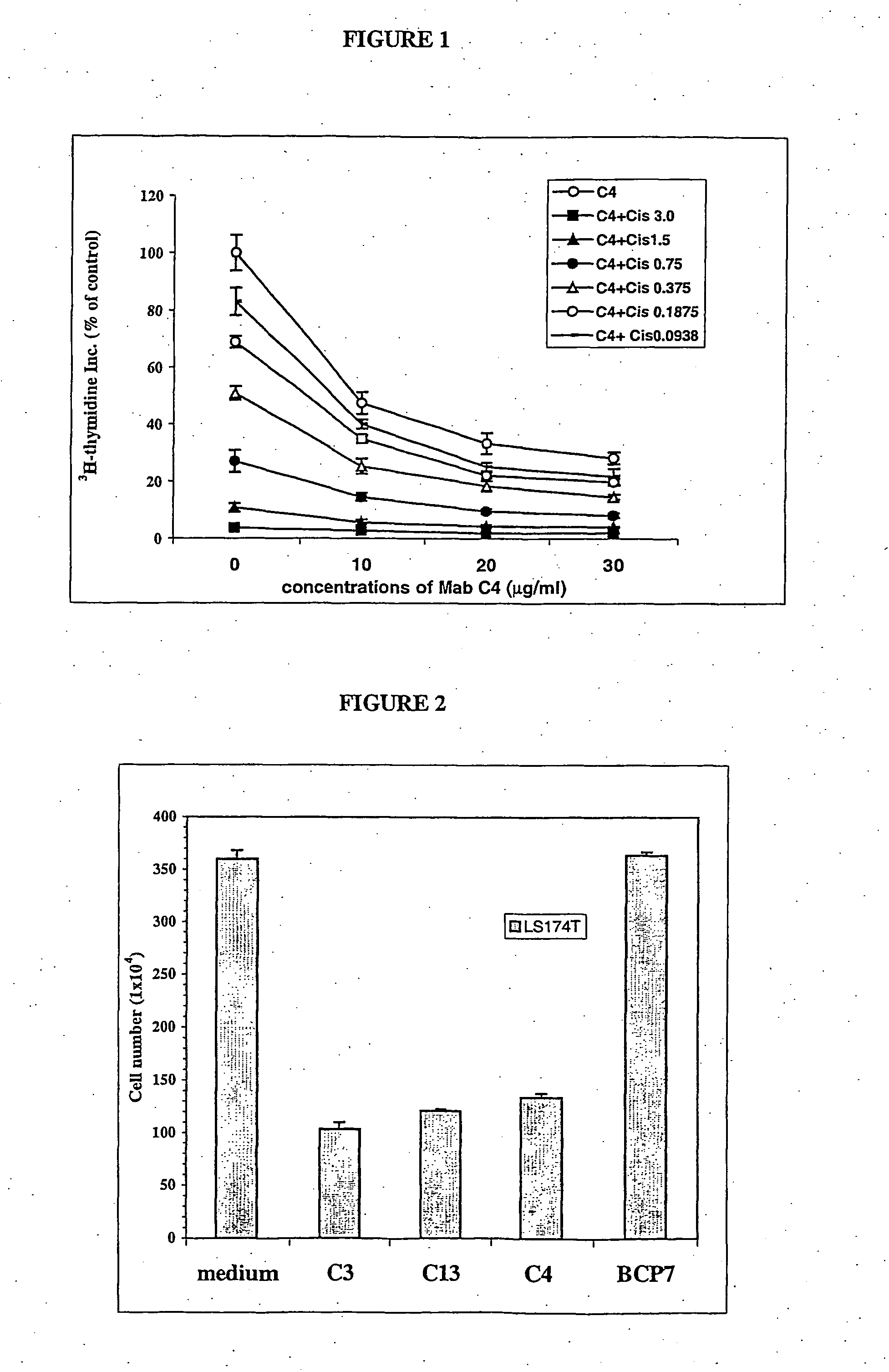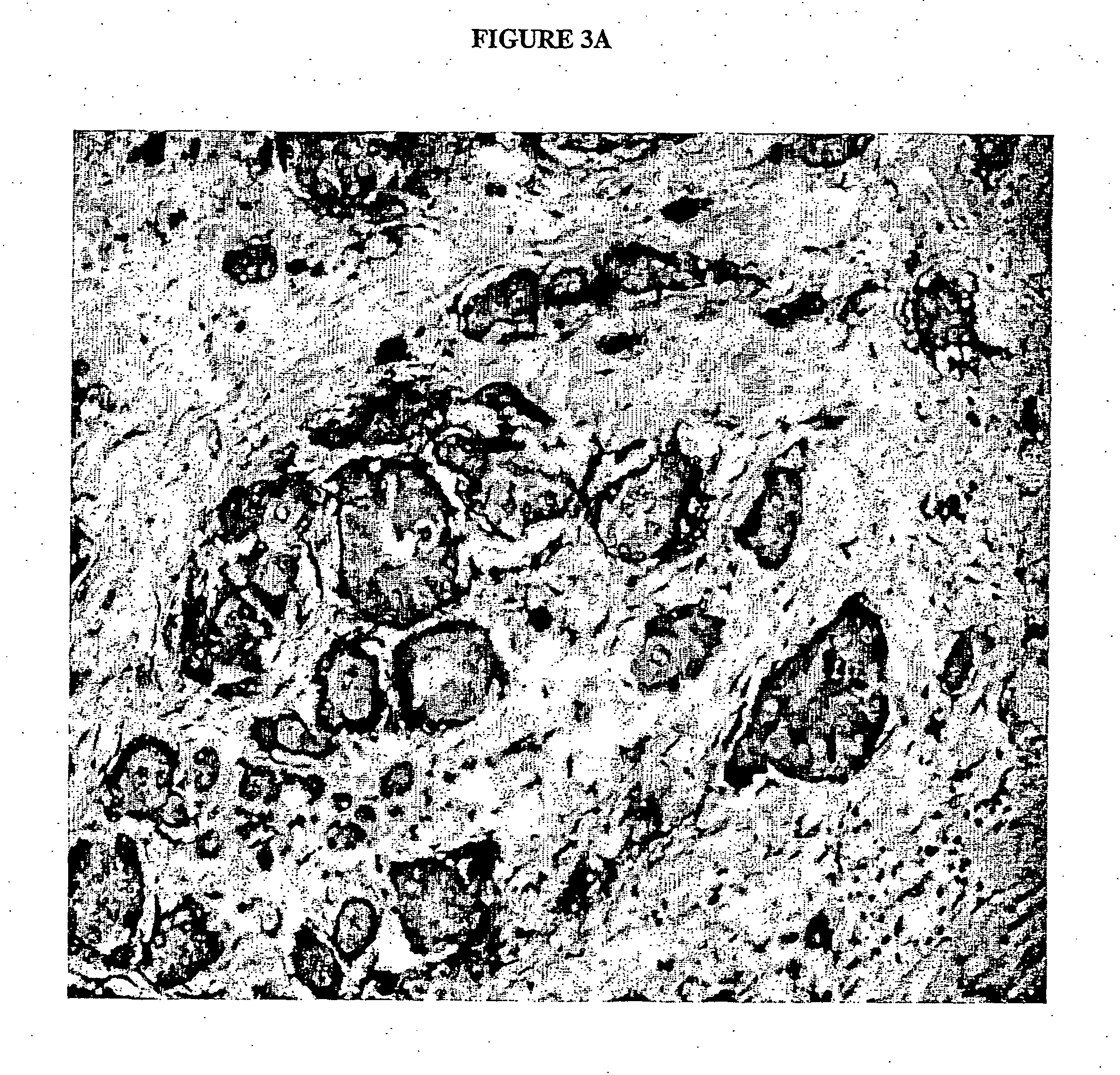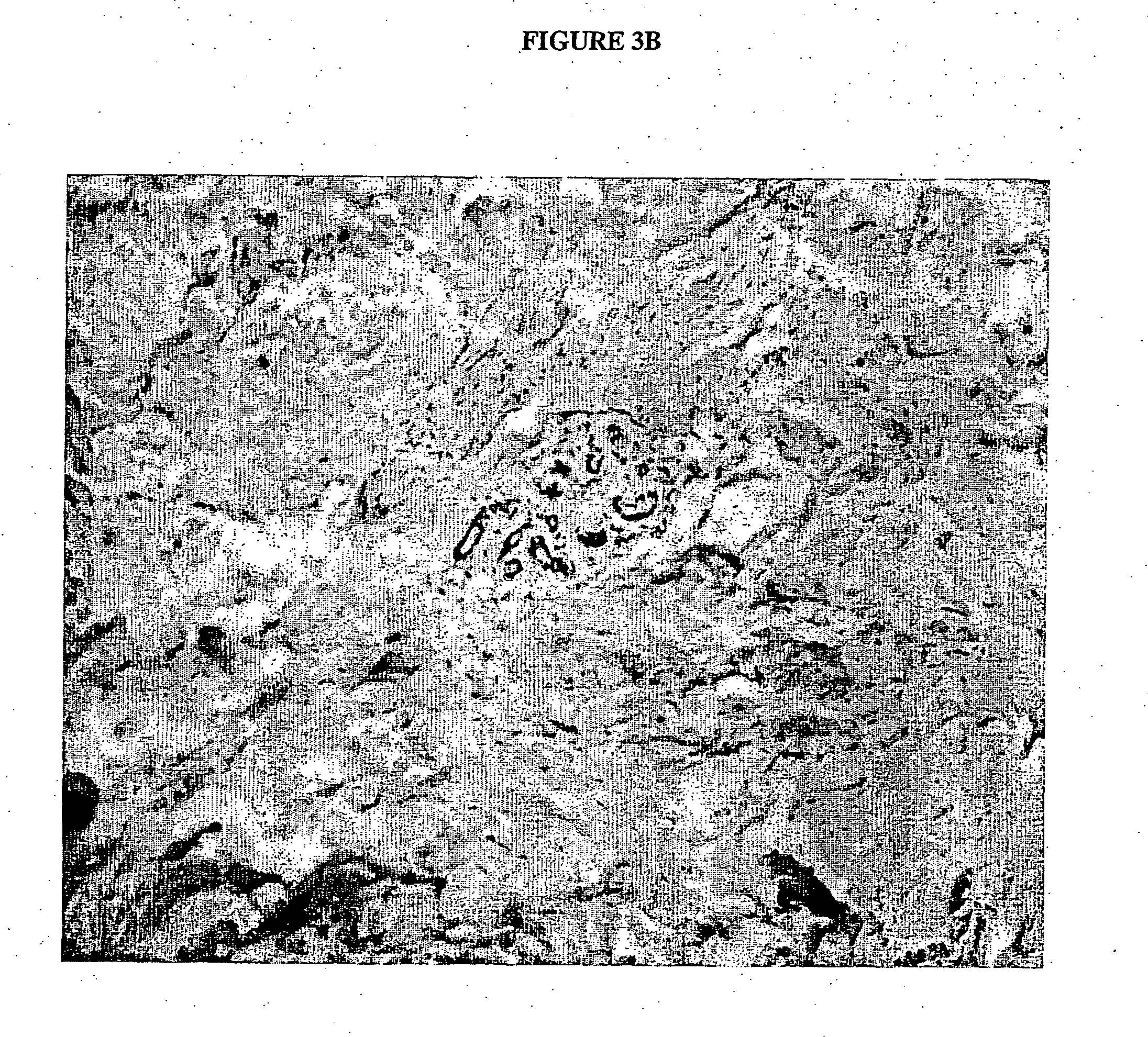Antibodies against cancer
a technology of anti-cancer and antibodies, applied in the field of anti-cancer antibodies, can solve the problems of largely abandoned mab-based anti-cancer agents, death of her2/neu positive breast cancer cells, etc., and achieve the effect of enhancing the inhibitory effect of cytotoxic drugs and significantly reducing cell numbers
- Summary
- Abstract
- Description
- Claims
- Application Information
AI Technical Summary
Benefits of technology
Problems solved by technology
Method used
Image
Examples
example 1
Isolation of Anti-Cripto-1 Antibodies and Summary of Experimental Results
[0079] Two of the isolated Mabs (ie C3 and C13) bind to Cripto-1 (a member of EGF family encoded by CR1 in humans, tdgfl in mouse), a soluble or, possibly, cell surface (Mr 36Kd) GPI-linked protein that appears to be a growth factor which promotes cell survival and proliferation and is important in embryonic development and cancer (Brandt R, supra) which has been described in a number of species (eg xenopus, zebrafish, mouse and human). Importantly, in the context of the present invention, the expression of Cripto-1 is increased several fold in human colon, gastric, pancreatic, breast and lung cancers and this increase can be detected in premalignant lesions (Brandt R, supra; Saeki T. et al. "Differential immunohistochemical detection of amphiregulin and cripto in human normal colon and colorectal tumours", Cancer Res, 52,pp 3467-3473 (1992); Salomon DS, supra; Panico L. et al. "Differential immunohistochemical...
example 2
Monoclonal Antibody C4 to Cripto-1
[0082] A further anti-Cripto-1 monoclonal antibody, Mab C4 was obtained using the same method as used to raise Mabs C3 and C13. Each Cripto-1 Mab was selected by a) detection of immnunoperoxidase staining to determine binding of the antibody to a target tissue, b) cell growth inhibition assay eg .sup.3H-thyrnidine assay in a selected cell line (antibodies showing >60% inhibition by thymidine incorporation) and c) detection of 2-fold decrease in cell no. as determined by trypan blue exclusion. The top line in FIG. 1 shows the inhibition of the LS174T colon cancer cell line by Mab C4 after 72 h of co-culture, whilst FIG. 2 shows the reduction in cell count number by the Mabs C4, C3 and C13 after 7 days of culturing 1.times.10.sup.4 of the cells in 25 cm.sup.2 flasks in 10 ml of medium with 30 .mu.g / ml of each Mab. The antibody also enhanced the sensitivity of LS174T to Cisplatin in that addition of the Mab to cells being treated with the drug reduced ...
example 3
Testing of Binding of Anti-Cripto-1 Antibodies with Cancer and Normal Tissues
[0084] The anti-Cripto-1 Mabs reacted with a number of cancer cell lines, such as LS174T, HT29 (colon cancer), MCF7, T47D (breast cancer), DU145 and PC3 (prostate cancer), Ben and Colo 235 (lung cancer), but not with embryonal kidney cell line 293 when tested by FACS and immunoperoxidase staining. The 3 Mabs also reacted with formalin-fixed tissues, such as colon cancer (7 / 9), breast cancer (5 / 7), lung cancer of all types (18 / 20), stomach (3 / 4), pancreas (1 / 2), but did not react with normal breast (0 / 4), colon (0 / 8), lung (0 / 4), stomach (0 / 2), pancreas (0 / 2), liver (0 / 3), and lymphocytes (0 / 3) by immunoperoxidase staining. The intensity and percentage of staining varied from negative to very strong positive, indicating that Cripto-1 expression varies in different cancers. FIG. 3A shows immunoperoxidase staining breast cancer tissue by Mab C4, compared to FIG. 3B in which no staining of normal breast tissue ...
PUM
| Property | Measurement | Unit |
|---|---|---|
| body weight | aaaaa | aaaaa |
| size | aaaaa | aaaaa |
| concentrations | aaaaa | aaaaa |
Abstract
Description
Claims
Application Information
 Login to View More
Login to View More - R&D
- Intellectual Property
- Life Sciences
- Materials
- Tech Scout
- Unparalleled Data Quality
- Higher Quality Content
- 60% Fewer Hallucinations
Browse by: Latest US Patents, China's latest patents, Technical Efficacy Thesaurus, Application Domain, Technology Topic, Popular Technical Reports.
© 2025 PatSnap. All rights reserved.Legal|Privacy policy|Modern Slavery Act Transparency Statement|Sitemap|About US| Contact US: help@patsnap.com



